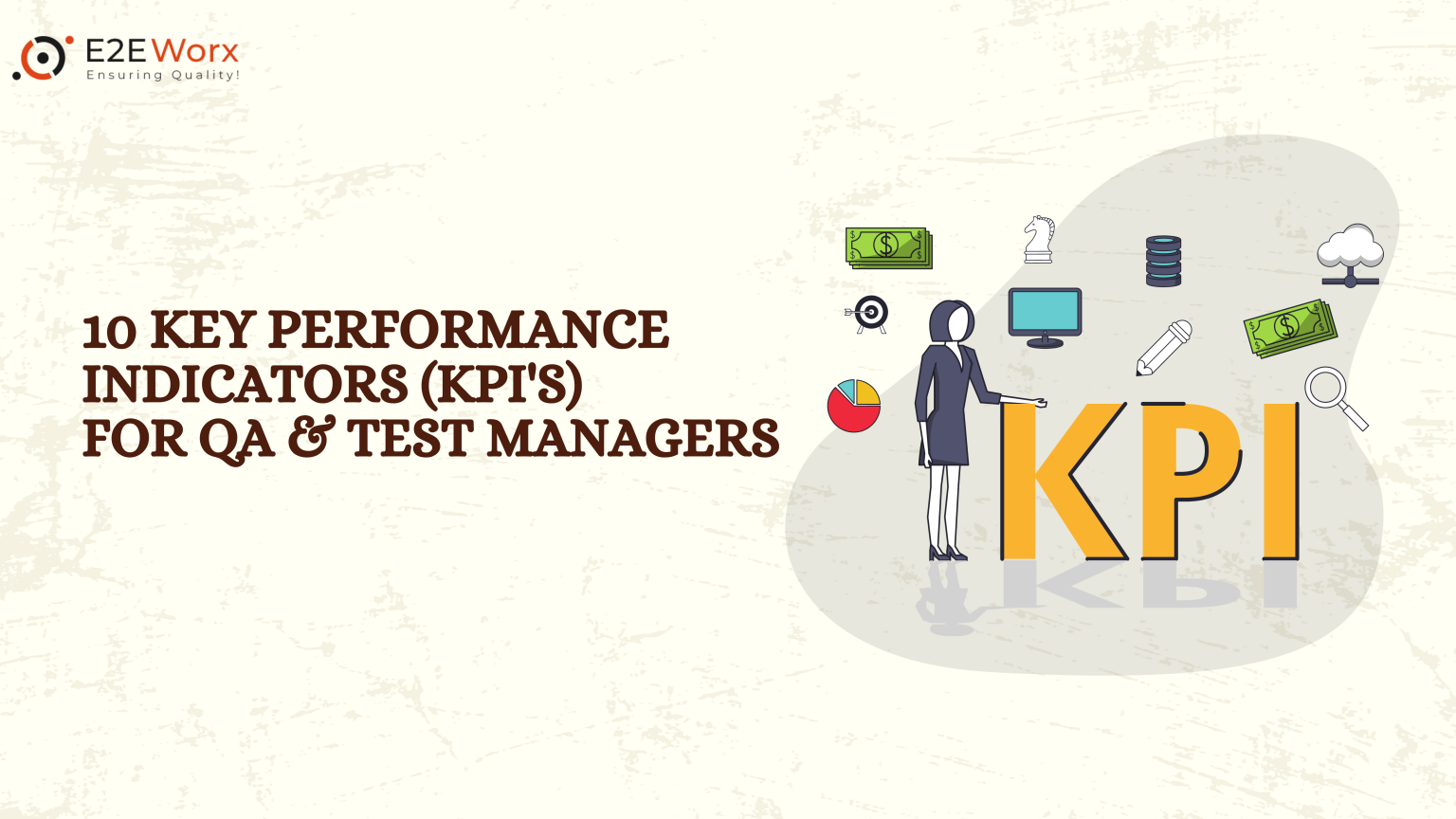
Key performance indicators (KPIs) are measured data that are used to assess progress and performance, guiding decision-making, and driving continuous improvement within organizations. At a time when the quality of any product plays an essential role in its success, It is also driving the force behind the victory and popularity of software applications. Accordingly, Software Quality Assurance Testers are finding ways to improve the effectiveness and efficiency of software products through their testing techniques.
To improve the overall performance and the quality of any software application, it is influential that the testing team distinguishes the metrics that might help them determine the testing goals. These goals should not just focus on improving the effectiveness of the software products but also the performance of the testing team.
Key performance indicators serve a critical role in our consideration. Monitoring and analyzing KPIs can help organizations understand their performance, make data-driven decisions, and take corrective action to improve outcomes.
While observing this, several key performance metrics or key performance indicators (KPIs) can be assessed. But first, let us understand key performance indicators (KPIs) and how it helps the testing team to improve software performance.
The Objective of Key performance indicators (KPIs) in Software Testing
Key Performance Indicators (KPIs) are generally used to estimate the performance and advancement of an organization, team, project, or individual. Besides tracking performance, measuring success, and identifying areas for improvement, it also allows for achieving specific objectives or goals.
Just like for other areas, KPIs also support software quality assurance testing to gauge and monitor the various testing activities performed by the testing team. It helps the testers to measure the actual results of the generated test cases, assess the progress, and make informed decisions throughout the testing phase of any software product.
Key Performance Indicators (KPIs) also help to evaluate the effectiveness and efficiency of the testing process. Besides, they provide insights into the quality of the software being tested and the testing team’s performance.
Let us have a detailed look at KPIs that can be used in software quality assurance to improve the testing process.
Key performance indicators (KPIs) for QA
An explicit and detailed outline is always necessary when testing any software application. The outline should illustrate all the aspects of testing metrics. These metrics help to gauge and observe all the testing activities. KPIs are the best way to gain all these facts. Besides, explains the result of a prediction based on multiple data sources.
Visit: Top 10 Software Quality Assurance Companies In Pakistan
Some commonly used KPIs for software testing
- Defect Density
KPIs help to measure the number of defects in units of code or test cases. It helps to assess the overall quality of the software and identify areas that require improvement. - Test Coverage
While testing any software application, there is always a limit to which any app can be evaluated. KPIs allow us to measure the extent to which software has to be tested. Besides, test coverage can be measured based on software requirements and functional coverage. It also assures whether the critical areas of the software are satisfactorily tested or not. - Test Execution Efficiency
KPIs also help to estimate that generated test cases are executed within a specific period. This process assures the efficiency of the testing while guaranteeing that team completes the project within an agreed period. - Defect Leakage
It measures the number of defects discovered by users or customers after software release. It helps evaluate the effectiveness of the testing process in identifying and fixing defects before release. - Test Case Effectiveness
KPIs measure the percentage of generated test cases that successfully identify defects. Also, it allows us to assess how thorough and quality the test cases are and whether they can uncover any potential problems. - Test Cycle Time
KPIs keep a pattern to complete a testing cycle, from test planning to test execution and defect resolution. Besides helps to estimate the efficiency of the whole testing process while identifying the areas where optimization is required. - Test Team Productivity
Productivity is the main and one of the most influential characteristics of a QA tester. Working in a team, KPIs ensure testing team productivity in terms of the number of test cases executed, defects found, and other metrics. Also, it helps to estimate the efficiency of the testing team and their ability to deliver quality results. - Test Automation Efficiency
KPIs also enable us to estimate the percentage of test cases that are automated. It measures the effectiveness of the test automation framework and helps to assess the effects of test automation on testing while identifying the areas for improvement. - Test Environment Stability
Environmental stability and availability are one of the important testing factors. This factor directly or indirectly affects the performance of a testing team. KPIs help to measure the stability of the test environment, which includes factors such as the availability of test servers, databases, and other resources required for testing. - Customer Satisfaction
No software application is effective and successful if it’s not able to fulfill the customer’s or the end-user’s needs. KPIs help to evaluate any software app through the customer’s point of view by gathering customer feedback, ratings, or surveys.
These KPIs can vary depending on the project, organization, and specific testing objectives. To satisfy the software quality assurance services, it is essential to select and track KPIs that align with the overall goals and objectives of the software testing process.
Conclusion
Examples of KPIs vary across industries and contexts. For instance, software testing KPIs are measurable metrics that assess the significance of the quality assurance process. They also help to assess the overall quality of the software that is being developed.
It is critical to regularly track and analyze the Key Performance indicators for software testing standards to identify areas for advancement. This will optimize the QA process, and ensure high-quality software.
